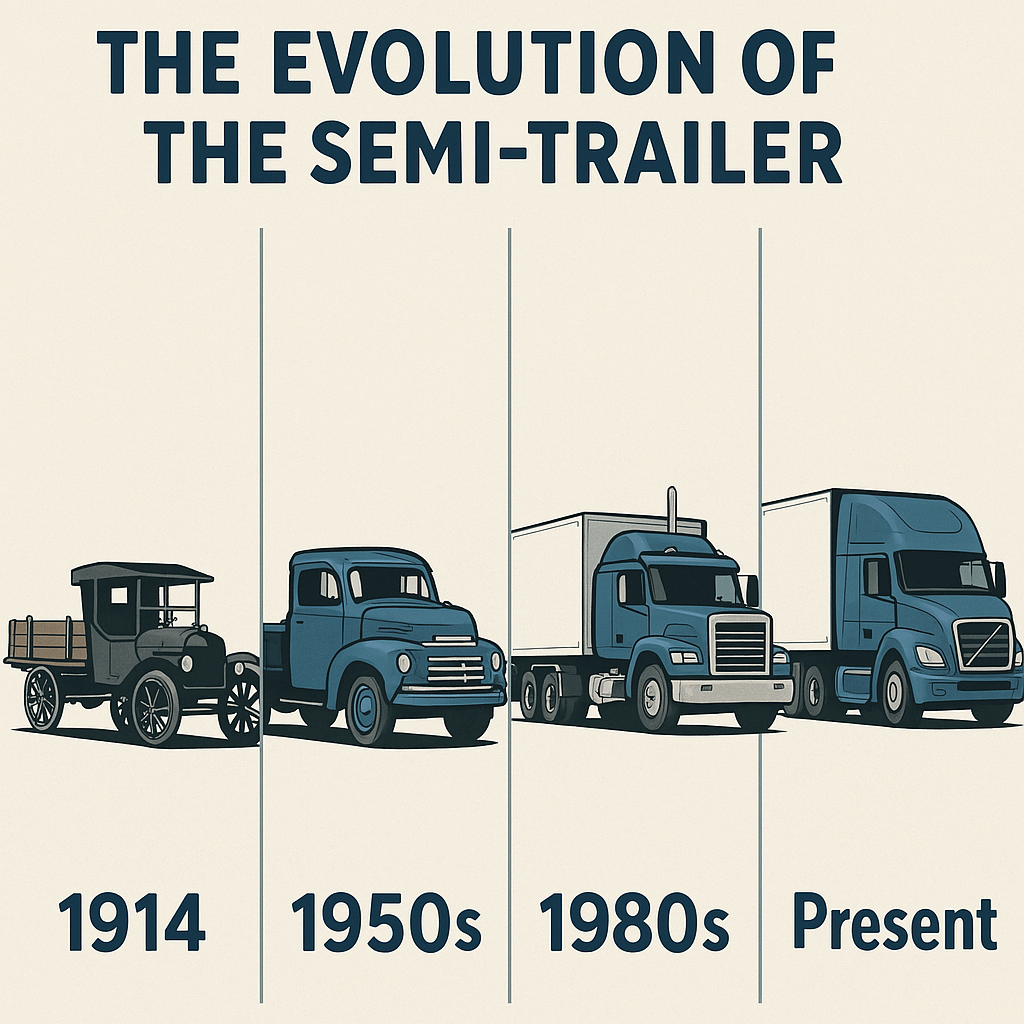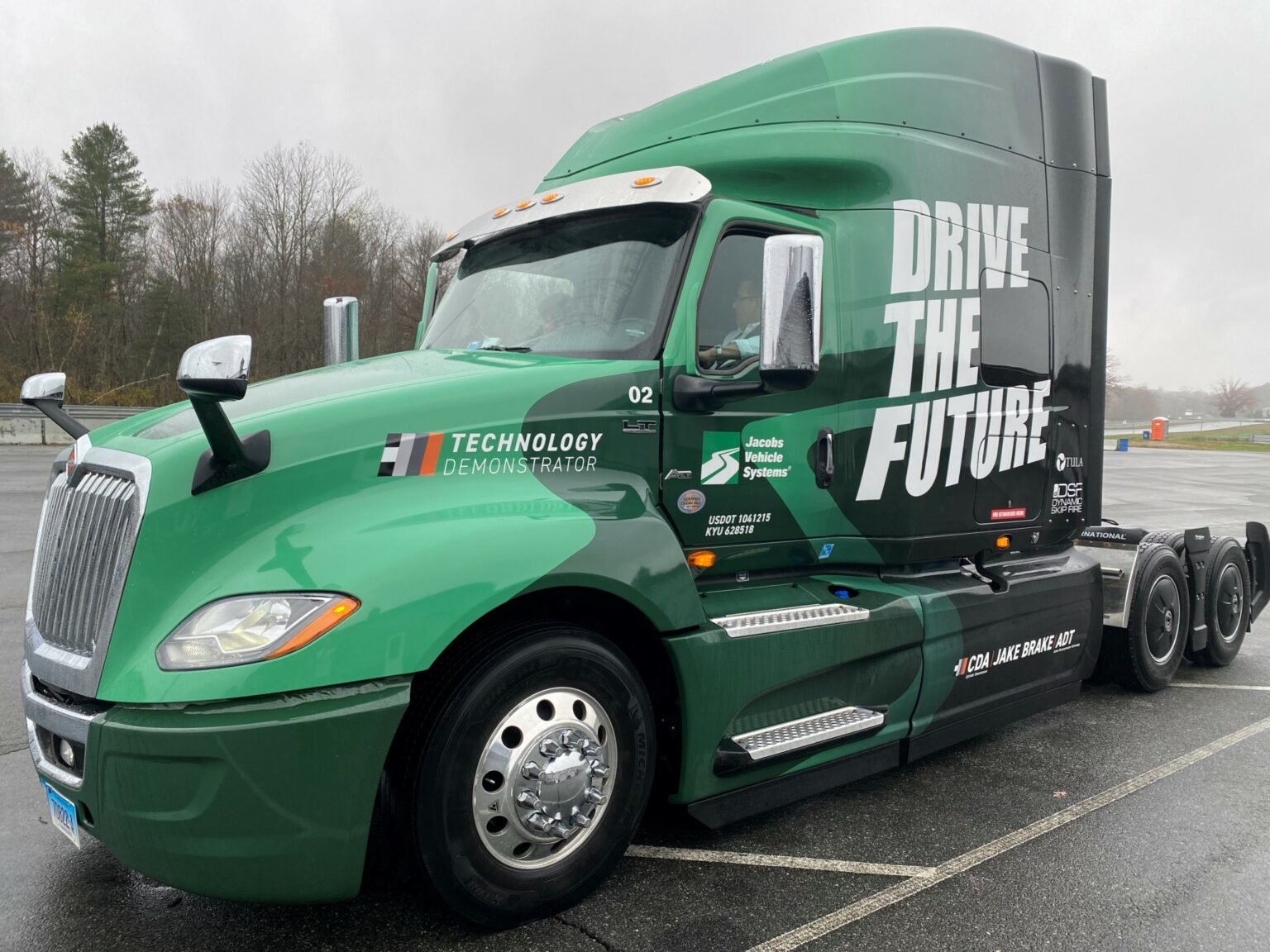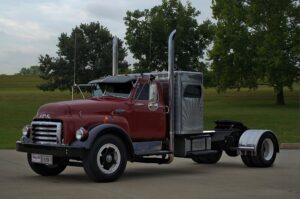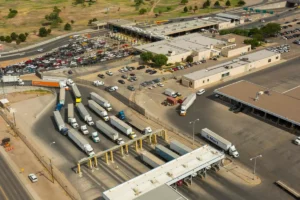The Evolution of the Semi-Trailer: A Timeline of Innovation in Trucking
The semi-trailer is one of the most important inventions in transportation history. It revolutionized the way goods are moved across cities, countries, and even continents. But where did it all begin? Who invented it, and how did it evolve into the powerful logistics tool we know today?
Let’s take a journey through time and explore the evolution of the semi-trailer.
🔹 1914 – The First Semi-Trailer Is Born
It all started in Detroit, Michigan, when August Fruehauf, a local blacksmith and carriage builder, was asked to build something that could carry a boat behind a car. Fruehauf came up with a brilliant solution—a trailer that connected to a Ford Model T, with part of its weight resting on the car.
This was the world’s first semi-trailer.
🔹 1918 – Fruehauf Trailer Company Is Founded
Seeing the potential of his invention, Fruehauf founded the Fruehauf Trailer Company, which quickly became a leader in the trucking industry. The company began mass-producing trailers for various industrial and commercial uses.
Their famous slogan?
“A horse can pull more than it can carry—so can a truck.”
🔹 1920s – Commercial Trucking Begins
During the 1920s, semi-trailers gained popularity in the lumber, steel, and automotive industries. They allowed companies to haul much heavier loads than traditional trucks could manage. This marked the start of the trucking revolution.
🔹 1930s – Innovation on the Rails
The idea of “piggybacking” was born. Railroads started loading semi-trailers onto flatcars to move them across long distances. This combination of rail and road transport boosted delivery efficiency and speed.
🔹 1950s – Highways Fuel the Boom
With the construction of the Interstate Highway System in the U.S., trucking took off. Trailers became longer, stronger, and more efficient. The fifth-wheel coupling became standard, making it easier to hook and unhook trailers.
🔹 1960s–1970s – Specialized Trailers Take Over
Innovation exploded. Trailer companies introduced:
- Refrigerated trailers (reefers) for food transport
- Flatbeds for oversized loads
- Tankers for liquids and chemicals
This was the golden age of freight diversity.
🔹 1980s–1990s – Safety and Efficiency
New rules standardized trailer lengths and weight limits. Trailer manufacturers focused on lighter materials, air-ride suspensions, and fuel efficiency. Telematics and early tracking systems began to appear.
🔹 2000s – The Smart Trailer Era Begins
Modern semi-trailers became tech-savvy with:
- GPS tracking
- Temperature sensors
- Automatic braking systems
These upgrades helped reduce theft, spoilage, and accidents.
🔹 2010s–Today – Going Green and Getting Smarter
Today’s trailers are being built with sustainability in mind:
- Electric axles and solar-powered units
- Carbon-fiber and composite materials
- Self-docking features
- AI-powered logistics software
Some companies are even testing autonomous semi-trailers for the future.
🚚 Final Thoughts
From a homemade boat hauler in 1914 to today’s high-tech freight machines, the semi-trailer has come a long way. It continues to shape the way we move everything—food, fuel, cars, and even the device you’re reading this on.
Next time you pass a semi on the road, remember: you’re looking at over a century of innovation on wheels.











